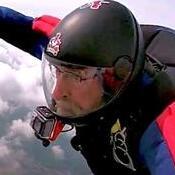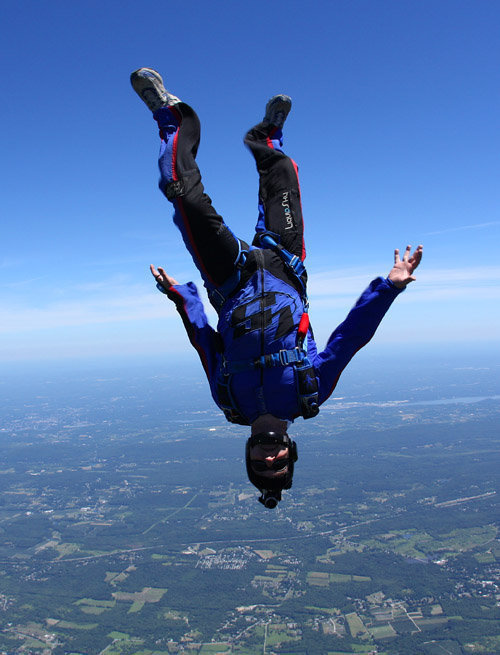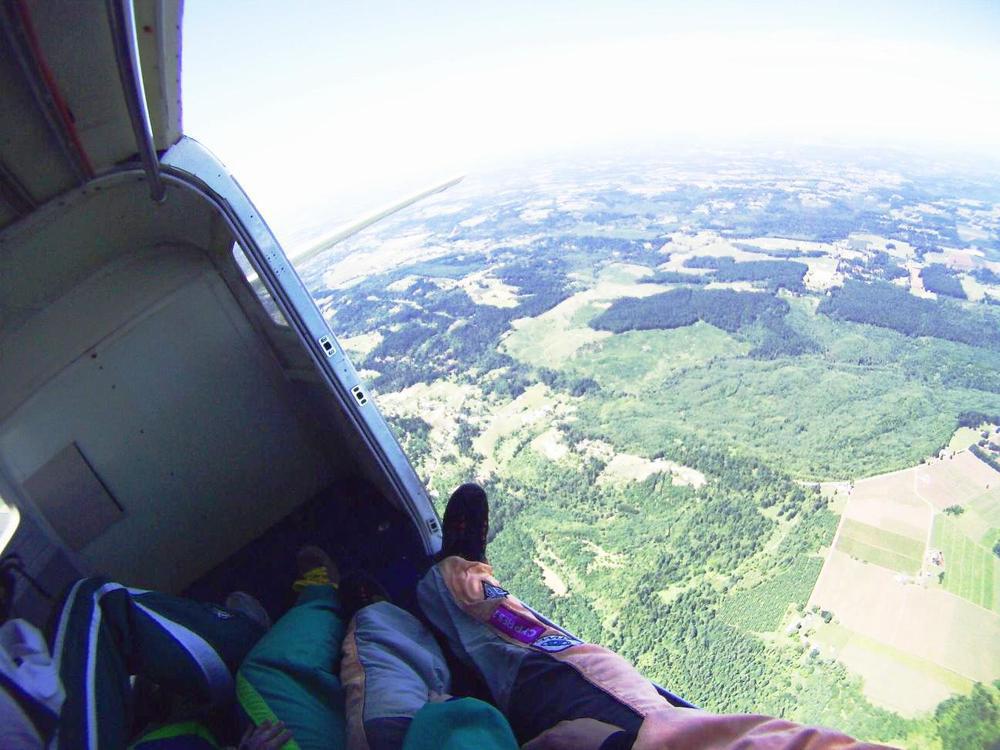Recommended Posts
QuoteIt was mentioned that the ability to see colors gets reduced. I wonder if that might be a good way to self test for hypoxia. Look at a poster with a old style TV type of color bar pattern, if the colors are clear, then OK? Of course you might just say yes to yourself no matter what.
Are there some self test methods that are commonly used?
Hypoxia is too insidious for a color wheel to be effective. They are used during altitude chamber trng, but only to show that your night vision is significantly affected even as low as 8,000 ft.
I have something else to add to this discussion that I used while being an altitude chamber instructor. If you see someone you think is experiencing hypoxia, don't ask them "are you feeling ok?", because 9 out of 10 times they will say, "YES, I feel fine!".
Have them perform a task for you. That will tell the truth. Something as simple as asking for a gear check.
IanHarrop 37
QuoteQuoteIt was mentioned that the ability to see colors gets reduced. I wonder if that might be a good way to self test for hypoxia. Look at a poster with a old style TV type of color bar pattern, if the colors are clear, then OK? Of course you might just say yes to yourself no matter what.
Are there some self test methods that are commonly used?
Hypoxia is too insidious for a color wheel to be effective. They are used during altitude chamber trng, but only to show that your night vision is significantly affected even as low as 8,000 ft.
I have something else to add to this discussion that I used while being an altitude chamber instructor. If you see someone you think is experiencing hypoxia, don't ask them "are you feeling ok?", because 9 out of 10 times they will say, "YES, I feel fine!".
Have them perform a task for you. That will tell the truth. Something as simple as asking for a gear check.
Thank you for this advice. This makes a lot of sense. I will remember and use this.
I've been an aerospace physiological training instructor for 25 years. 23 with the Air Force and 2 with NASA. Also, I'm a hyperbaric (compression) chamber instructor.
billvon 2,427
For you that might work. The big problem is that everyone experiences hypoxia a little differently. That's why a chamber ride is useful; you experience how _you_ perceive hypoxia. (You can also just jump until you get hypoxic; it happens eventually to most jumpers at some point in their careers. Not recommended though.)
QuoteI sincerely hope you never have to face this type of situation, but if you do, I'm sure that *you* will be tough enough not to get hypoxic and won't be weak and sickening as the irresponsible people in that video.
It isn't about being "tough". What alarms me is that an individual is able to stand on their own two feet so easily, but is impaired enough to not eventually become aware in that rather lengthy period of time that things are not right.
Obviously I've never experienced hypoxia, but I've been under the influence of mind altering drugs and beverages before and was able to determine what was happening was not normal.
I guess you will have to allow me to experience this first hand before I will believe your mind is in such of a state that it is not in your control to such an extent.
The jumper that was on his back at the door, I can understand that he was experiencing hypoxia to a level that he wasn't thinking clearly. It's the jumper standing so easily above him that worries me.
As some of you have said, after seeing this video I will be cautious about these things now. The last thing I ever want to do is not be 100% aware and healthy when I jump.
Jumped: Twin Otter, Cessna 182, CASA, Helicopter, Caravan
billvon 2,427
>two feet so easily, but is impaired enough to not eventually become
>aware in that rather lengthy period of time that things are not right.
Yep. Hypoxia is pretty insidious in this case, because:
a) most people who experience it aren't expecting to. It would be like not drinking at all, then having the presence of mind to not drive home because you were drunk.
b) your judgement goes first. The very judgement that you might use to decide not to jump doesn't work once hypoxia sets in. This is definitely NOT the stupidest thing people have done while hypoxic.
c) for many people hypoxia makes them single-minded. Hence the last thing they were trying to do (i.e. get out the door) will become a fixation.
d) most skydivers think of themselves as "tough" and do not want to admit that they feel a little odd - and often that's the only warning you get before your judgement starts to go.
>I guess you will have to allow me to experience this first hand before
> I will believe your mind is in such of a state that it is not in your
> control to such an extent.
As others have mentioned, an altitude chamber is a great way to experience this.
bch7773 0
The only high altitude jump I've made was from 23k out of a king air. My friend took off his mask to help me with the door when the red light came on. The green light took a while to come on, and when it was time to climb out, he acted pretty dopey. He was floating, but when I yelled go, he didn't let go. I finally had to push him off. He was terrible on the RW dive, till about 12k when suddenly he got a lot better.
Its proof that even with good oxygen masks, you can still get hypoxic.
MB 3528, RB 1182
Thanks for the video and this post I'm excited about the class.
"You start off your skydiving career with a bag full of luck and an empty bag of experience. The trick is to fill the bag of experience up before your bag of luck runs out."
My personal favorite is a combination of cabbage and hard boiled eggs.... damn near will make someone puke
QuoteThank you for that post. That is exactly what happened. I felt more drunk then I ever have. I should not have left the plane. The jump run was in excess of 10 minutes and the pilot was the one yelling go. Everyone I talked to on that jump said they should not have gotten out. That will be my last High alt. jump. I took this video. and I told people not to post it. I believe this conversation has happened before on these forums without the inflammatory video.
Hey, rhanold - just to echo what most people are saying (seems to be the general sentiment here), I'm glad you had the video of it, and I appreciate someone posting it.
This type of video is "inflammatory" in the best sort of sense. Having never done a high-altitude jump before, I've always heard the word "hypoxia" batted around...but never considered just how serious a threat it could be. The fact that people could see this sort of thing and not do anything about it says a lot - not necessarily about the people, bur mostly about potential lethality of the condition itself. And the fact that we can see it, instead of just hearing about it, drives the point home. Hard.
Interesting that the rest of the world seems to put a stigma on skydivers as "thrill-seekers," "adrenaline-junkies", "crazy people who like to lose control". I've come to realize that as a skydiver, my biggest fear is losing control. A funneled exit is "losing control," sure, but short of being knocked unconscious, we can all get ourselves out of them. Do we take risks? Sure. But most of us seem to be taking educated risks, and not seeking out an unsafe situation on a regular basis to try & kill ourselves & walk away from it.
That's what makes this video such an eye-opener: the fact that you can be standing in an open door at 18,000 ft, unaware of the precarious situation you're in (esp. if you're like me, and haven't been able to afford a Cypres...yet)...pretty much unaware of anything.
I never knew.
Thanks for opening my eyes (and the eyes of lots of others, judging from the thread) to it. It may save a life one of these days.
Elisha 1
QuoteI'm glad this video was posted. This would make a great video to show to jumpers on safety day, even where planes don't go high... because your jumpers go to boogies... and these boogies have high altitude jumps.
Did an 18K jump (someone's Altitrack said 17.5K) this weekend. I had this video and ensuing discussion on my mind during the whole ride up. Yes, there was oxygen (those nose tubes) from 13k+. Thanks again for posting.
QuoteAs we went though the progression an Air Force Lieutenant chatted with us over intercom. At one point he addressed me and asked what it felt like. My answer….”well, you know how when you’ve been doing cocaine all day long and you take a little hit of weed to get the edge off…”
Jesus, Tom, we don't want to encourage the experience, do we?
The highlight was the chamber ride which was great. I went almost the full 5 minutes (at 25000 AGL) and then had to have my mask put back on, my oxygen saturation was 36 or 38% at the time. I noticed at 1 minute I felt very warm and my skin felt flushed. At about 2 minutes the feeling was intensified. At 4 minutes I wrote twitchy on my checklist, but I don't really recall doing it. Then sometime after that they put my mask on and in about 4 breaths I was fine. Then I kept my mask on and observed someone else take their mask off. It was interesting to watch them slow down and make notes on their body language.
Then they dimmed the lights and we went down to 18000AGL and removed the masks again. It was interesting to see the difference at night with and without oxygen after only a few minutes. It was crazy.
I should be getting the DVD in the mail sometime this week and will post it on skydivingmovies or something along those lines.
I plan to go do another ride to see if I get the same warm feeling as the 1st time. Overall I thought it was a great experience at least for me.
"You start off your skydiving career with a bag full of luck and an empty bag of experience. The trick is to fill the bag of experience up before your bag of luck runs out."
beowulf 1
Contact for FAA Medical Center, Altitude Chamber
Larry Boshers
Airman Education – FAA Medical Center
[email protected]
(405) 954-7767
"You start off your skydiving career with a bag full of luck and an empty bag of experience. The trick is to fill the bag of experience up before your bag of luck runs out."
daremrc 0
ryoder 1,398
QuoteIs there a listing anywhere of other locations that non-military people could experience an altitude chamber?
Bottom of page: http://www.faa.gov/pilots/training/airman_education/aerospace_physiology/
Elisha 1
QuoteQuoteIs there a listing anywhere of other locations that non-military people could experience an altitude chamber?
Bottom of page: http://www.faa.gov/pilots/training/airman_education/aerospace_physiology/
Beale in NorCal...to bad it wasn't at Travis since it is closer.
I know! We can have a NorCal skydivers trip to the Beale altitude chamber!
Only two locations that are free in the U.S. are Oklahoma City (FAA) and Houston (NASA chamber).
Kjeld 0
Can you give the references about this claim? DAN (Divers Alert Network) has done extensive research to the development of DCS during flying and their findings are not in line with your claim of developing DCS.
The following scientific articles (also Air Force research) from an earlier date conclude that DCS is not a significant risk below 21.000ft.
DCS should NOT be confused with hypoxia as is common.
Files DS, Webb JT, Pilmanis AA.
Depressurization in military aircraft: rates, rapidity, and health effects for 1055 incidents.
Aviat Space Environ Med. 2005 Jun;76(6):523-9.
Haske TL, Pilmanis AA.
Decompression sickness latency as a function of altitude to 25,000 feet.
Aviat Space Environ Med. 2002 Nov;73(11):1059-62.




.thumb.jpg.4bb795e2eaf21b8b300039a5e1ec7f92.jpg)




Glad everyone came out ok.
Keep in mind that smokers have a higher physiological altitude. i.e. 12 500' may feel to them as being at 15 000' compared to a non smoker.
[]DETE
Share this post
Link to post
Share on other sites